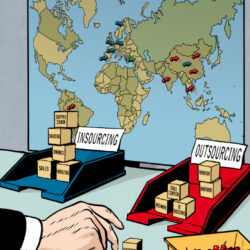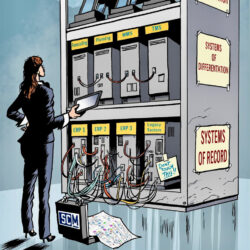Carbon reduction and reshoring go hand in hand

Redesigning their production network is the most important measure companies are taking – or plan to take – to reduce carbon dioxide emissions. Relocating production capacity from China and Asia to Western Europe (‘onshoring’) or to Central and Eastern Europe (‘nearshoring’) not only makes the entire supply chain less vulnerable to disruptions, but can simultaneously reduce carbon emissions. These findings come from a survey by logistics and location consultancy Buck Consultants International (BCI Global) and Supply Chain Media of around 150 supply chain executives in Europe and the USA.
One in two companies said that carbon reduction initiatives are driven by their own strategic considerations, but half of them indicated that the need to comply with increasingly stringent regulations and customer demands also plays an important role. “Companies constantly have to make trade-offs between providing the right services at the right time, and costs, risks, their cash position and reducing carbon emissions. We see that many companies are not yet making carbon reduction a top priority in those trade-offs,” states Martin Gouda, partner at BCI.
Nevertheless, they are well aware of the need to accelerate carbon reduction. Gouda: “Interestingly, many companies now also see the decentralization of their production activities, also referred to as ‘reshoring’, as a significant carbon reduction measure because it reduces long-distance transport from Asia to Europe. And on top of that, it reduces the risk of supply chain disruptions.” According to the survey, the main obstacles are a lack of knowhow at suppliers, the absence of standards and a lack of time and resources within one’s own organization.
Carbon accounting
It is still early days for carbon accounting – the precise mapping of emissions in all steps of the production and distribution process – but the need for solid data as the basis for decision-making is growing rapidly. However, only one in three companies have adequately implemented carbon accounting in the end-to-end supply chain, the survey shows. “In many companies, measuring carbon emissions is still in its infancy. This is worrying, because in 2025 the European Union’s Corporate Sustainability Reporting Directive (CSRD) will directly affect 50,000 companies, and indirectly affect many more, by requiring them to report on their carbon emissions, among other indicators,” states Niels Prins, senior consultant at BCI. “At the moment, they rarely go beyond annual estimates based on key figures and fail to make use of the available tools and guidelines.”
CBAM
Moreover, almost 50% of companies still have to analyse the impact of the Carbon Border Adjustment Mechanism (CBAM) on their business and market position. The CBAM is aimed at creating a level playing field for European companies, which are already subject to stringent regulations, by imposing levies on carbon-intensive products entering the European Union from outside. Martijn Lofvers, Director of Supply Chain Media, sees that businesses have some catching up to do: “Over 40% expect a clear impact by 2026 – and much bigger than currently – so companies will have to start working quickly to assess the potential effects.”










